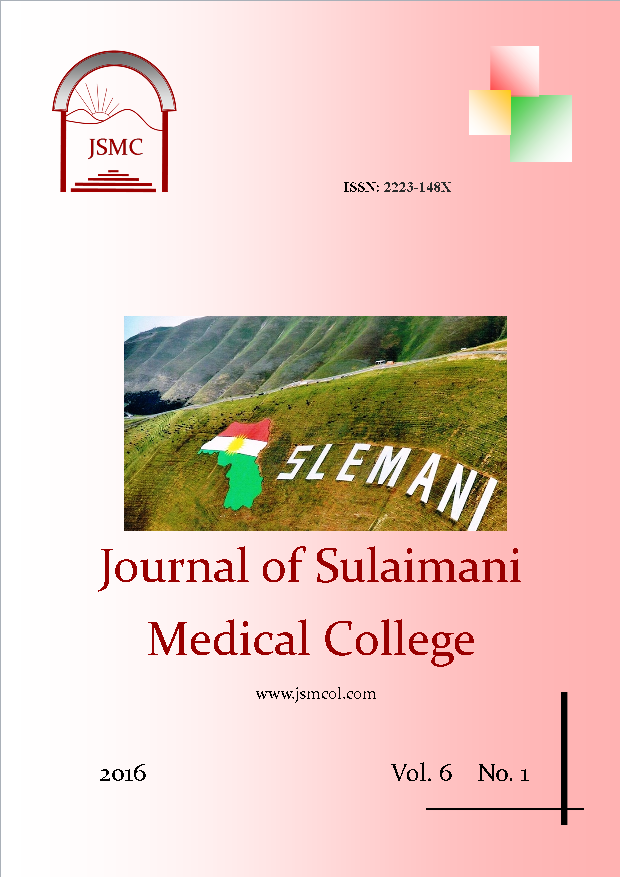ACCURACY OF TRANSPERINEAL ULTRASOUND RELATIVE TO MAGNETIC RESONANCE IMAGING IN EVALUATION OF PERIANAL FISTULAS
DOI:
https://doi.org/10.17656/jsmc.10114Keywords:
Perianal fistula, Transperineal ultrasound, Magnetic Resonance ImagingAbstract
Background
Ano-rectal fistula is a chronic inflammation of perianal tissues affecting 1/10.000 individuals. Traditionally, treatment is surgical with the possibility of recurrence reaching up to a quarter of cases, therefore preoperative appropriate evaluations and imaging are necessary to decrease recurrence rate.
Objectives
Determining accuracy of transperineal ultrasound relative to magnetic resonance imaging in evaluation of perianal fistulas.
Methods
A prospective study was conducted on 51 patients with clinically diagnosed perianal fistula. Transperineal ultrasound (TPUS) and magnetic resonance imaging (MRI) were done for all patients. The following variables were recorded by each of the tests and the results were compared one to one: Firstly the number of the tracts, their relation to the anal sphincters. Secndly the number of internal openings, their sites and distances from the anal verge. Thirdly any associated findings, including perianal abscess, extension (branching) or local inflammatory phlegmons. Descriptive statistics were used. P-values ≤ 0.05 were considered statistically significant.
Results
Relative to the MRI, the accuracy of TPUS in detection of fistula tract was 96%. Finding of at least one relation of the tract to the anal sphincter was 86.7%, detection of internal opening was 82%, and localization of the internal opening was 82% with comparable result in measuring their distance from the anal verge (P value = 0.15). Lastly the overall accuracy of TPUS to find at least one associated finding was 92%. Among detected associated findings, TPUS was able to accurately classify them with no significant difference between TPUS and MRI (P-Value > 0.05). Three superficial fistula tracts were detected by TPUS and proved by surgical operation while they were undetectable by MRI.
Conclusion
TPUS is an accurate imaging investigation in the evaluation of perianal fistula and its results was comparable to those of MRI in preoperative assessment of perianal fistula diseases.
References
Waniczek D, Adamczyk T, Arendt J, Kluczewska E, Kozenska-Marek E. Usefulness assessment of preoperative MRI fistulography in patients with perianal fistulas. Pol J Radiol. 2011;76(4):40–4.
Lunniss PJ, Jenkins PJ, Besser GM, Perry LA, Phillips RK. Gender differences in incidence of idiopathic fistula-in-ano are not explained by circulating sex hormones. Int J Colorectal Dis 1995;10(1):25–28 DOI: https://doi.org/10.1007/BF00337582
Robinson AM Jr, DeNobile JW. Anorectal abscess and fistula-in-ano. J Natl Med Assoc. 1988; 80(11):1209–1213
Quah HM, Tang CL, Eu KW, Chan SY, Samuel M. Metaanalysis of randomized clinical trials comparing drainage alone vs primary sphincter-cutting procedures for anorectal abscess-fistula. Int J Colorectal Dis. 2006;21(6):602–609 DOI: https://doi.org/10.1007/s00384-005-0060-y
Morris J, Spencer JA, Ambrose NS. MR imaging classification of perianal fistula and its implications for patient management. Radiographics 2000; 20(3): 623–35. DOI: https://doi.org/10.1148/radiographics.20.3.g00mc15623
Parks AG, Gordon PH, Hardcastle JD. A classification of fistula-in-ano. Br J Surg. 1976; 63(1):1–12. DOI: https://doi.org/10.1002/bjs.1800630102
Barker PG, Lunniss PJ, Armstrong P, Reznek RH, Cottam K, Phillips RK. Magnetic resonance imaging of fistula-in-ano: technique, interpretation and accuracy. Clin Radiol 1994; 49(1):7-13. DOI: https://doi.org/10.1016/S0009-9260(05)82906-X
Spencer JA, Ward J, Beckingham IJ, Adams C, Ambrose NS. Dynamic contrast-enhanced MR imaging of perianal fistulas. AJR Am J Roentgenol 1996; 167(3):735-741. DOI: https://doi.org/10.2214/ajr.167.3.8751692
Jaime de Miguel Criado. MR Imaging Evaluation of Perianal Fistulas: Spectrum of Imaging Features, RadioGrahics. 2012; 32(1):175-194. DOI: https://doi.org/10.1148/rg.321115040
Jochen Wedemeyer, Timm Kirchhoff, Gernot Sellge, Oliver B, Joachim L, Michael G, et al. Transcutaneous perianal sonography: A sensitive method for the detection of perianal inflammatory lesions in Crohn’s disease, World J Gastroenterol 2004;10(19): 2859-2863 DOI: https://doi.org/10.3748/wjg.v10.i19.2859
Shilpa V. Domkundwar, Atul B. Shinagare. Role of Transcutaneous Perianal Ultrasonography in Evaluation of Fistulas In Ano, J Ultrasound Med 2007; 26(1):29–36. DOI: https://doi.org/10.7863/jum.2007.26.1.29
Rubens DJ, Strang JG, Bogineni-Misra S, Wexler IE. Transperineal sonography of the rectum: anatomy and pathology revealed by sonography compared with CT and MR imaging. AJR Am J Roentgenol 1998; 170(1):637–642. DOI: https://doi.org/10.2214/ajr.170.3.9490944
Maconi G, Tonolini M et al, Transperineal perianal ultrasound versus magnetic resonance imaging in the assessment of perianal Crohn’s diseases, Inflammatory Bowel Diseases ,official journal of the crohn’s & colitis foundation of America.2013;19(13):2737-2743. DOI: https://doi.org/10.1097/01.MIB.0000436274.95722.e5
Ryan B, Mahmoud M. Al-hawary, Ravi K Kaza, Ashish P.Wasnik, Peter S.Lui, et al. Rectal Imaging: Part 2, Perianal Fistula Evaluation on Pelvic MRI What the Radiologist Needs to Know, AJR Am J Roentgenol 2011;197(1): 204-220.
A. P. Sathe, E. Soh, K. Y. Seto et al, Magnetic Resonance Imaging of Perianal Fistulas, ECR 2014/C-0317. http://dx.doi.org/10.1594/ecr2014/C-0317.
Peschers UM, DeLancey JO, Schaer GN, SchuesslerB. Exoanal ultrasound of the anal sphincter:normal anatomy and sphincter defects. Br J Obstet Gynaecol September 1997; 104(9): 999-1003. DOI: https://doi.org/10.1111/j.1471-0528.1997.tb12056.x
Ryan B., Mahmoud M. , Ravi K. et al , Rectal Imaging: Part 2, Perianal Fistula Evaluation on Pelvic MRI What the Radiologist Needs to Know, AJR Am J Roentgenol 2011;197: 204-220
Downloads
Published
Issue
Section
License
Copyright (c) 2017 Salah Mohammed Fateh

This work is licensed under a Creative Commons Attribution-NonCommercial-ShareAlike 4.0 International License.





 This work is licensed under
This work is licensed under 